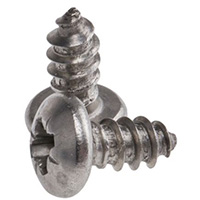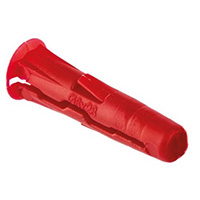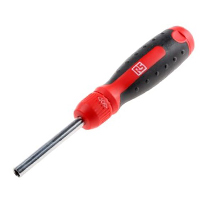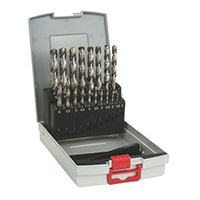
|
What are self-tapping screws and thread forming screws?
Self-tapping screws are different to traditional screws as they tap their own threads when screwed into either plastic, wood or metal. Self-tapping screws are usual split into two variants thread forming and thread tapping.
Self-Tapping Screw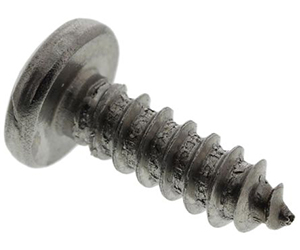 |
Thread Forming Screw 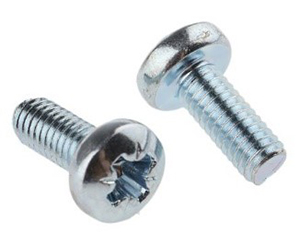 |
Self-tapping screws are commonly used when you need to attach two pieces of material together where you can only access one side of the material. Where you can access both sides you can use either a screw or a bolt.
Self-tapping screws are useful where you have to disassemble and reassemble products such as furniture, as self-tapping screws will relocate themselves into the same threads which they have been removed from.
What are self-tapping screws and self-drilling screws?
Self-tapping and self-drilling screws can easily be confused. Self-tapping screws do not have an integrated drill bit into the screw and certain types of self-tapping screw require a pilot hole to be drilled before it can be driven into material.
Self-Tapping Screw |
Self-Drilling Screw 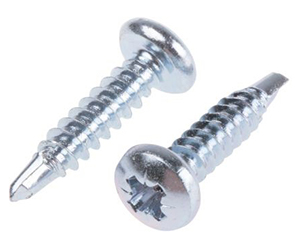 |
Self-Tapping Screws
Blunt nose and flat ended Self-tapping screws require a pilot hole slightly smaller than the screw diameter to be created before they can be driven into the material with a screwdriver. Pointed nose self-tapping screws do not require a pilot hole. The action of driving the screw in will result in the self-tapping screw cutting a thread into the material and securing the materials together. Self-tapping screws are typically used to secure wood, plastic, metal and brick together.
There are two types of self-tapping screws, thread-forming and thread-cutting.
Thread Forming |
Thread Tapping |
Thread-forming: Before you can use these screws you will need to drill a pilot hole as the screw itself does not contain a pointed tip. Thread-forming screws are usually used to join plastic materials together. Due to their design they typically grip material more tightly. Care should be taken as there is a risk of over-tightening the screw, which can result in joined materials breaking from the pressure.
Thread-Tapping: These screws do not require a pilot hole but one can be drilled to make fastening easier. Remember to make the pilot hole smaller than the diameter of the thread tapping screw. Thread-tapping screws remove material and create a path for the screw. The drawbacks to using this type of screw is when they are removed it can result in stripped threads. If you experience stripped threads you should use a larger thread-tapping screw when reattachment is made.
Popular types of self-tapping screws
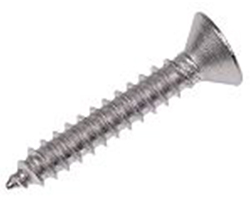 |
Countersunk or flat head self-drilling screws Allows for a flush finish as the head of the screw sits below the surface of the surrounding material. This allows for a flat finish and a smooth result. |
 |
Allen or socket head self-tapping screws Less prone to the head of the screw being compromised and distorted when driving into the material, due to the shape of the driver used. |
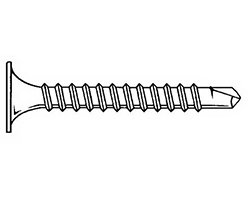 |
Bugle head self-tapping screws The bugle head screw features a countersunk head with a flat top and a concave bearing face. The shape of the bugle head allows distribution of the stress over a much wider area than is possible with a flat head screw. Bugle headed screws are used to attach plasterboard to wood to metal studs. |
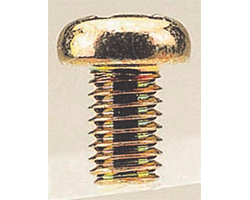 |
Button head, dome head and pan self-tapping screws Typically used in carpentry. Due to the dome shape, there is less chance of the screw head countersinking into the material. |
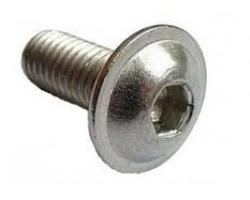 |
Flange head self-tapping screws Usually used to attach metal to metal or plastic to plastic. The flanged head allows more clamping torque to be applied than other head types. |
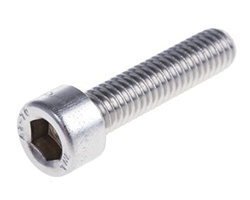 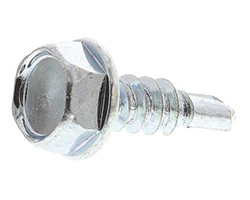 |
Hex head / Socket self-tapping screws These screws feature a hexagonal head and are typically used by contractors in heavy-duty applications where a countersunk head is not necessary. |
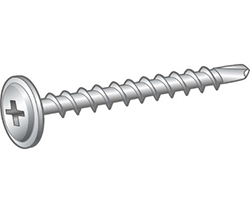 |
Wafer head self-tapping screws Wafer head screws feature a flat top surface and countersunk head. The conical under-head does not extend to the outer edge of the screw head, which allows for a flush fit on wood and other softer materials. |
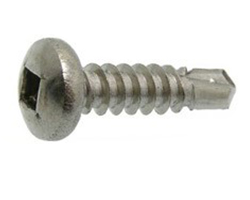 |
Pan head self-tapping screws The head of this screw is rounded on the top and vertical on the sides. They are similar to oval or round screws. They are typically used in high torque applications into either metal or wood |
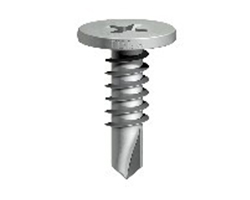 |
Pancake head self-tapping screws This screw head is used where a large clamping area & an unobstructed head is required. The larger clamping area allows for the force to be distributed across a wider area. |
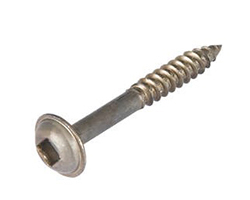 |
Square head self-tapping screws Less susceptible to the bit slipping (cam-out) than a traditional Phillips screw when you are driving the screw into the material. Care should be taken to ensure that the screw is not over tightened. |
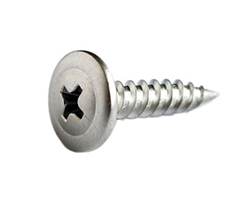 |
Truss head self-tapping screws This self-tapping screw head is extra wide and has a slightly rounded surface, or top and contains a wider surface area under the head of the screw. Truss head screws are suitable for sheet metal and other material with large diameter holes. Their low-dome shaped head makes tampering with or removing the head difficult. |
Self-Drilling Screws
If you require Tek screws for wood applications you can use ones which are manufactured for roofing. The flute on these screws is very small and the diameter of the hole that it drills is smaller than the diameter of the outside screw thread. This design allows the screw to bite into the material for a secure hold.
Anatomy of a self-drilling screw
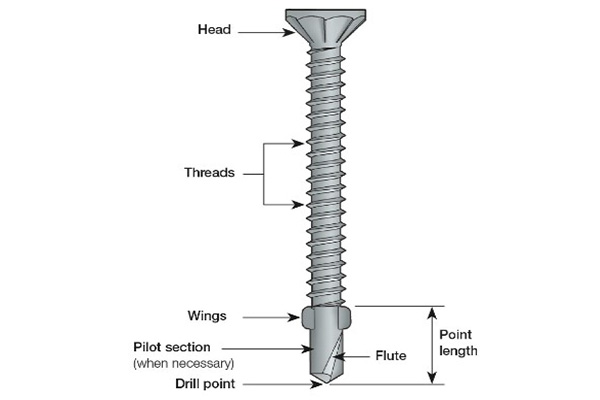
*Wings are only present on Remer Tek screw.
Self-drilling screws are available in the same head and drive types as self-tapping screws. You should select your screw type based on the material and finish you require. Below we have outlined some considerations to take into account when making your selection.
What should you consider when deciding which self-drilling screw to use?
- Flute Length – The length of the flute determines the thickness of the metal that self-drilling screw can be used on. The flute is designed to extract the drilled material from the hole. If the flute becomes blocked cutting will stop. Simply put if you have are attaching thick pieces of material together then you will require a self-drilling screw with a flute to match. If the flute becomes blocked and you take no action the drill point will likely overheat and fail.
- Drill Point – The drill point refers to the unthreaded section of the screw. When selecting the screw length you should account for the length of material that you are drilling through. If the threads engage before the drill point length is completely through the material it will result in the screw breaking.
- Winged and non-winged – It is necessary to use self-drilling screws with wings when fastening wood over 0.5 inches thick to metal. The wings will ream a clearance hold and keep the threads from engaging too early. When the wings engage with the metal they will break off allowing the threads to engage into the metal. If threads engage too early this will cause the two materials to separate.
Self-drilling screws are susceptible to the same forces as drill bits. Cutting performance is impacted by the speed and depth of the cut made. Make sure that you select the correct sized screw for your application so you can avoid the drill head melting if too much RPM is applied or snapping if too much pressure is applied. A simple rule of thumb is small diameter screws can take higher RPM’s but less force can be applied. Transversely the larger the diameter the lower the RPM but higher force can be applied.
Self-Drilling screw RPM & Force guide
| Screw Size | Major Diameter (in.) | RPM* | Applied Force* (lb.) | Work Material Hardness* |
|---|---|---|---|---|
| #6 | 0.138 | 2,200 | 80 | 20 Rockwell "C" -scale |
| #8 | 0.164 | 1,900 | 93 | |
| #10 | 0.190 | 1,600 | 104 | |
| #12 | 0.216 | 1,400 | 116 | |
| #14 | 0.250 | 1,200 | 131 | |
| #16 | 0.313 | 1,000 | 157 |
Self-drilling screw trouble shooting guide
| Failure Type | Cause of failure |
|---|---|
Flutes chipped |
Too much force was used when driving the screw in |
No drilled hole |
Multiple reasons for failure which include: material too hard, driver set to reverse or the drill point is blunt which could be due to handling or a manufacturer defect. |
Flute melted |
Too many RPMs used or the material was too hard which resulted in the flute melting |
Melted point |
Material too hard or too much force has been applied |
Drill bit split |
Too much force was used when driving the screw in |
Common project questions
Self-Tapping screws for aluminium
Aluminium has many positive characteristics that make it easy to work with. When using self-tapping screws on aluminium choose a self-tapping screw with a drill like point and sharp cutting blade threads that go down the whole length of the screw. These self-tapping screws are designed to keep thin metal from denting.
To use self-tapping screws, place the screw directly on the aluminium sheet. The sharp point of the screw will make its own hole. Stabilize the screw so it doesn't tilt as it goes in. Let the screw turn until it goes all the way through. Take care to not to over-tighten the screw as this can damage the metal or break the screw.
The advantage of using self-tapping screws for aluminium is that they don't need pre-drilling and are easily removed without damaging the metal. They can also be reused in the same material.
Aluminium in certain applications can vibrate which causes other fastener types to work loose. An example of is when aluminium is used as building material for boats. Boat engines cause the frame of the boat to vibrate which can result in other fasteners such as nails or regular screws falling out. Trilobular stainless steel self-tapping screws, are ideal in situations where vibration is present as their thread design reduces friction during thread forming whilst providing resistance to vibrational loosening.
Self-tapping screws for plastic
Plastics are more ridged than wood and thus are more prone to cracking. When using self-tapping screws in plastic it is advised that you drill a pilot hole before screwing in the self-tapping screw. If you are installing hardware such as hinges on plastic you will want to avoid drilling the pilot hole all of the way through the material for aesthetic reasons.
UPVC Window Screws
UPVC window screws can also be referred to as UPVC window screws. They are available in a variety of lengths but typically come in one diameter (4.8mm gauge). Standard UPVC hardware screws are between 3.9mm and 4.3mm in diameter. To ensure a tight fit when reattaching window furniture extra thickness is added to UPVC screws to ensure a secure fit and material for the screw to bit into.
Self-tapping screws for fibreglass
Fiberglass consists of glass fibres embedded in a resin. The combination of glass fibres and resin makes for a very strong material. When using self-tapping screws in fiberglass you will find that the drilling tip of the screw becomes dull quickly as it comes into contact with the glass fibres, which leads to cracking in the glass fibres and the gel coat. To avoid cracking proper installation techniques must be used.
FAQs
How can I work out what screw size I need?
In most cases, trial and error will help you work out the appropriately sized screw. You should take into account the thickness of the material and the finish you require. Also, note that it is easier to make a hole bigger with a larger screw than a larger sized hole smaller.
Does Size of the screw matter?
Selecting the wrong sized screw for the task can potentially be dangerous. If the screw is too long or small for your task it isn’t the right screw for the job. If the screw doesn’t fully disappear (head type dependent) or is too loose you should remove and use a more appropriate type.
Can I Use a Sheet Metal Screw in Wood?
You should use the right screw type for your application as the first cause of action. You can use a metal screw in wood, but a screw specifically designed for wood would be more appropriate due to their flexibility.
Can I Use a Wood Screw in Sheet Metal?
No. The tensile strength of metal screws is different. You should only use metal screws and not wood screws.
Can I use indoor screws outside?
If the screw is galvanised or labelled for ‘exterior use’ then you can use either indoors or outdoors. Galvanised screws will not rust or corrode as quickly as they have a protective coating to resist against rain.
Do you still need a screwdriver for a self-tapping screw?
Most likely. It all depends on what material you are screwing into.
How Do I Tighten or Loosen a Screw?
Always turn a screw clockwise to tighten it, and anti-clockwise to loosen it again. Lefty Loosey, Righty Tighty.
How tight should a screw be?
Very tight or up to the manufacturer's torque ratings. Different head types of screws allow for more or less torque to be applied. You may want to factor this when making your decision on which screw head you purchase.
My Screw is loose – What Now?
If you are adamant that you have the correct size and style screw, you can use a little glue to finish the job. If you need to remove the screw at some point for maintenance reasons you will likely not be able to extract the screw.
Matching drill bits to screw sizes – a Formula for Screw Sizes to Match Drill Bits?
Unfortunately, there isn’t a formula for matching screw sizes and drill bits. Drill bit sizes depend on whether you are drilling into hardwood, softwood of whether you are using rawl plugs. Try to start with a smaller drill bit and test for fitment, if fitment is too tight step up a drill bit size. Remember that drill bits are manufactured for material types as such you cannot use a wood drill bit for metal or masonry work.
Product spotlights
Use one of these links to view the products on the RS website
